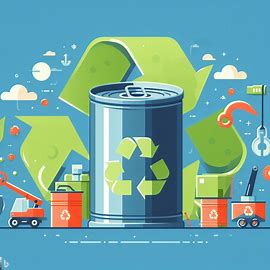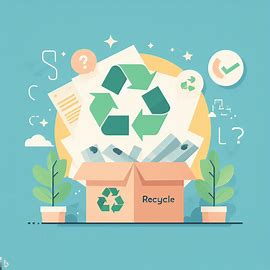Are Magazines Recyclable? Eco-Friendly Tips
Recycling is an essential practice for reducing our environmental footprint and conserving valuable resources. Magazines are a common household item that often accumulates over time. But, have you ever wondered whether magazines are recyclable? In this comprehensive guide, we will answer that question and provide you with all the information you need to recycle magazines in an eco-friendly way.
Are Magazines Recyclable?
Yes, magazines are recyclable! They are typically made from paper, which is a highly recyclable material. However, there are some important things to consider to ensure you are recycling magazines correctly and effectively.
1. Check Local Recycling Guidelines
Before you toss your magazines into the recycling bin, it’s crucial to check your local recycling guidelines. These guidelines can vary from one area to another, so it’s essential to know what is accepted in your community. In most cases, magazines are accepted in curbside recycling programs.
2. Remove Non-Recyclable Elements
Magazines often contain non-recyclable elements, such as plastic wrap, tape, or glue. Before recycling, make sure to remove these components to ensure the paper can be processed properly.
3. Separate Inserts
Magazines may contain inserts like subscription cards or promotional materials. These inserts may not be made from recyclable materials, so it’s important to remove them and dispose of them separately.
4. Store Magazines Properly
To prevent magazines from becoming wet, dirty, or damaged, store them in a dry and clean place until you’re ready to recycle. This will help maintain the quality of the paper and make it more valuable in the recycling process.
5. Recycling Magazines at Home
If your community does not have a curbside recycling program, you can still recycle magazines at home. Simply collect them in a designated recycling bin or bag and take them to a local recycling center. Be sure to follow their guidelines for proper recycling.
The Recycling Process
Recycling magazines involves a series of steps to transform old magazines into new paper products:
- Collection: First, magazines are collected from households, businesses, and recycling centers. It’s essential to ensure that they are free from contaminants like food, liquids, or non-recyclable materials.
- Sorting and Cleaning: At recycling facilities, magazines are sorted into paper categories. They are then cleaned to remove any impurities like staples, tape, and plastic wrap. This cleaning process ensures that the resulting paper is of high quality.
- Shredding: After cleaning, magazines are shredded into smaller pieces. This step breaks down the paper into manageable fibers.
- Pulping: The shredded paper is mixed with water to create a pulp. During this stage, ink and other additives are removed from the paper to create a pulp that can be used to make new paper.
- Deinking: For magazines, which often have colorful pages and images, deinking is a critical step. It involves removing the ink from the pulp, leaving a clean, white material.
- Papermaking: The deinked pulp is then used to make new paper. It’s pressed, dried, and rolled into large rolls of recycled paper, which can be used for various purposes, including new magazines.
Benefits of Recycling Magazines
Recycling magazines comes with several environmental and economic benefits:
- Resource Conservation: Recycling magazines reduce the demand for new paper, conserving trees and energy used in paper production.
- Energy Savings: Recycling paper requires less energy than making paper from raw materials, reducing greenhouse gas emissions.
- Waste Reduction: Recycling magazines helps divert paper waste from landfills, which helps reduce landfill space and related environmental issues.
- Job Creation: The recycling industry generates employment opportunities, contributing to local economies.
Your Role in Recycling Magazines
As an individual, you can make a meaningful contribution to magazine recycling by:
- Educating yourself and others about the importance of recycling magazines.
- Following your local recycling guidelines to ensure proper disposal.
- Removing non-recyclable elements from magazines before recycling.
- Supporting businesses that use recycled paper products.
By taking these steps, you play a vital role in conserving resources, reducing waste, and helping protect the environment. Recycling magazines is a simple yet effective way to make a positive impact and reduce your carbon footprint.
Conclusion
Magazines are indeed recyclable, and by following the proper recycling guidelines, you can play your part in conserving resources, reducing waste, and contributing to a greener planet. Remember to check your local recycling rules, remove non-recyclable elements, and store your magazines correctly to ensure they are recycled effectively. Embrace the recycling habit and make a positive impact on the environment while reducing your carbon footprint. Start recycling your magazines today!







